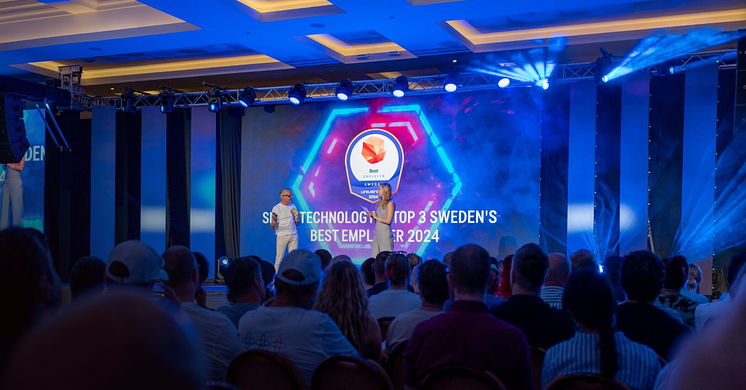Sigma Technology Group rankas bland Sveriges Topp 3 Bästa Arbetsgivare 2024



Samtidigt som Sverige accelererar sina satsningar på autonom mobilitet tar Sigma Technology täten med avancerad utveckling inom Steer-by-Wire genom sin egenutvecklade simulator – en plattform som gör det möjligt för fordonstillverkare att på ett säkert och effektivt sätt testa och validera Drive-by-Wire-styrsystem.
Sigma Technology IT Group har tecknat ramavtal med Socialstyrelsen för leverans av expertkonsulttjänster. Genom detta avtal kan Sigma Technology leverera specialistkompetens till Socialstyrelsen för att möta växande krav inom civilt försvar.

Amelie Olsen, enhetschef på Sigma Technology Informatics Solutions, har utsetts till Årets IT-kvinna i Linnéregionen. Priset delades ut vid en ceremoni på PM & Vänner i Växjö den 26 november.

Sigma Technology samarbetar med Telia, RISE, Trafikverket, Svevia och Högskolan i Halmstad i ett innovationsprojekt CyberInfra som ska minska farliga vägarbetsolyckor. Ungefär var femte dag blir ett TMA-fordon påkört på svenska vägar. CyberInfra är ett innovationsprojekt som ska kraftigt minska olyckorna genom 5G-teknik, realtidsdata och smarta digitala skyltar.

För trettonde året i följd har Universum utsett Sigma Technology Group till en av Sveriges bästa arbetsgivare och företaget tar en hedrande andra plats i 2025 års ranking. Utmärkelsen är ett bevis på bolagets långsiktiga engagemang för att skapa en arbetsplats som präglas av autenticitet, inkludering och fokus på människor.

Sigma Industry East North Group placerar sig på åttonde plats i Universums ranking av Sveriges Bästa Arbetsgivare 2025. Undersökningen, som bygger helt på medarbetarnas egna upplevelser, visar på ett högt eNPS samt att Sigma beskrivs som en arbetsplats där människor trivs och vill stanna länge.

Sigma bidrar med ingenjörskompetens och tekniska lösningar för framtidens energisystem.
